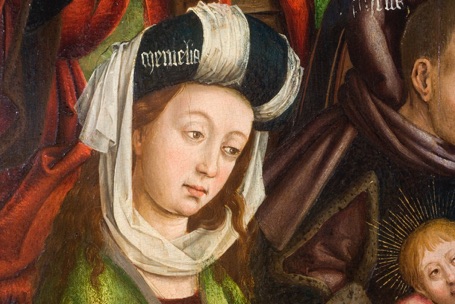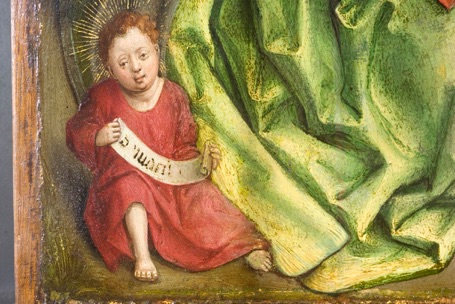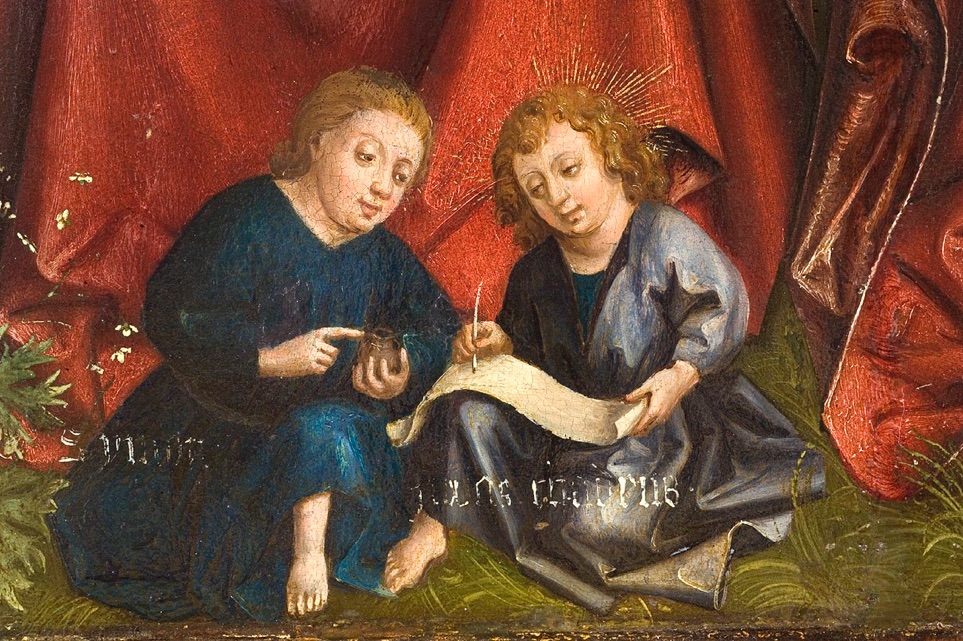
This painting by an anonymous artist shows St Anne in the centre of a Holy Kinship group. The family appear to be seated outside on a grassy knoll. There are symbolic flowers sprouting up between the figures, such as the iris, symbol of martyrdom, behind the Virgin Mary.
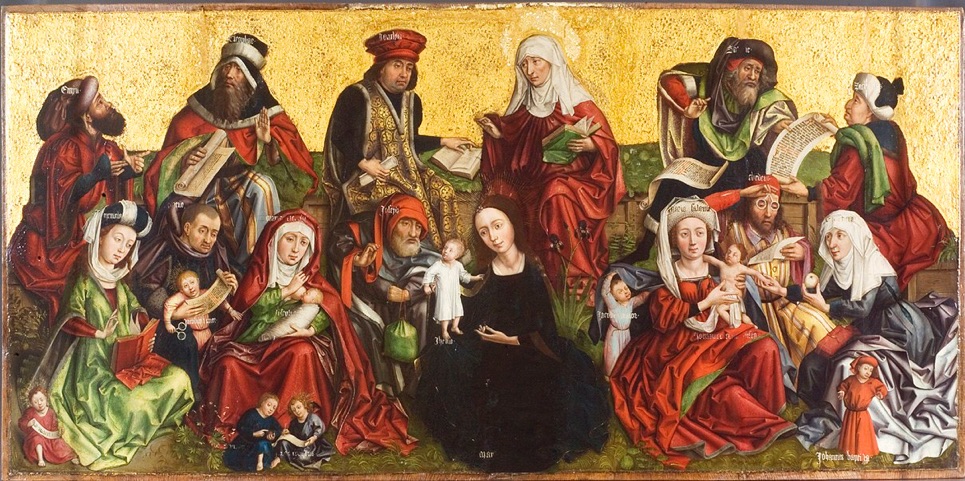
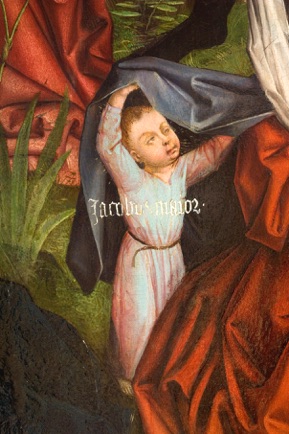
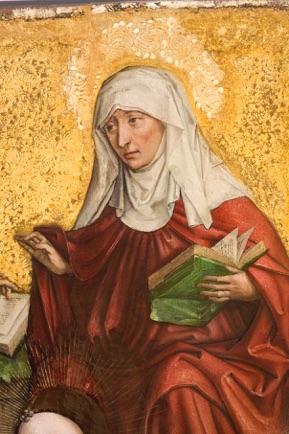
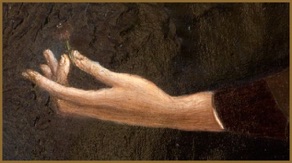
The background consists of patterned gold leaf, which creates a rich decorative effect: the halo around St Anne’s head is modelled in a slightly different pattern.
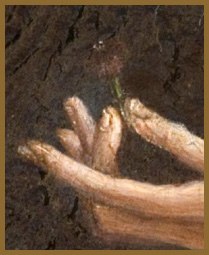

Many family members are identified by names written across the tops of their heads: Mary and Christ have theirs written at their feet, although Mary can easily be recognised by her traditional blue dress, the radiating halo around her head, and her central position in the lower half of the painting.
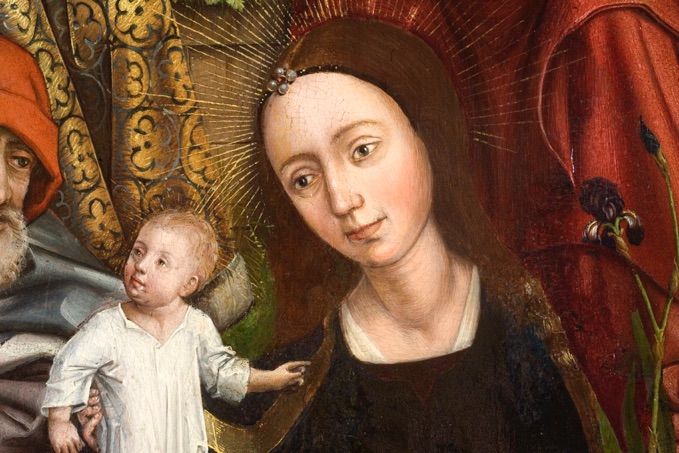

The older generation are situated in the upper half of the painting, above their descendants. Together with her three husbands, Anne is seated on a higher part of the knoll. She holds an open book in her left hand. Her posture and the gesture of her right hand indicate that she is talking to her first husband Joachim, father of the Virgin Mary. He is seated on her right hand, the traditional place of a husband; he holds a small scroll in his right hand but points to a book lying between them on the bank. Anne’s second husband Cleophas is sitting on Joachim’s right, while Anne’s third husband Salomas is placed on her left. Cleophas and Salomas are both holding scrolls, which are traditionally associated with the Old Testament, whereas the book represents the New Testament. As grandparents of Christ, Joachim and Anne are thus visually linked with the New Testament: the book between them is placed directly above the small figure of Christ below in Mary’s lap.
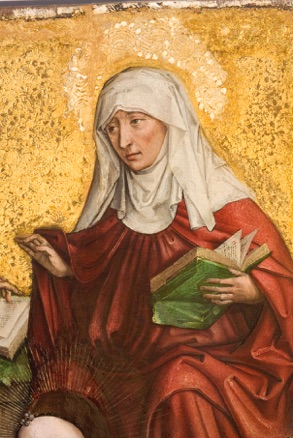
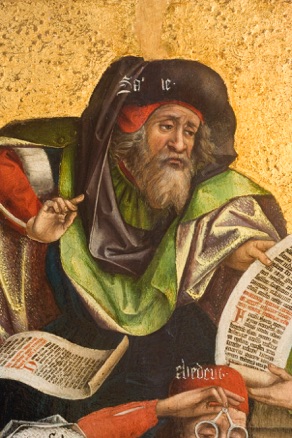



In the lower half of the painting, Mary is seated in the centre, immediately below her parents Anne and Joachim: her proximity to her mother is reminiscent of the popular devotional image of St Anne Selbstdritt. Mary's blue dress is the traditional colour of the sky. She is the only woman in the group to wear her hair loose as a symbol of her virginity: all others have their hair covered, as befits married women in the Middle Ages. Mary holds a flower, probably a pink, which was a popular new flower in this period and often held by sitters in courtly portraits. Although all the figures are seated on the ground, in Marian iconography it is a traditional symbol of her humility: medieval authors believed this word to be etymologically derived from the Latin word humus, meaning the earth. The Christ child is standing in his mother's lap. He is dressed in a knee-length white tunic, its colour symbolising purity and innocence: such tunics were the typical medieval garment for toddlers after the initial swaddling stage. Christ's head is turned towards his adopted father Joseph, who appears to be kneeling in an act of veneration, his right hand raised. He is depicted as an elderly bearded man, in stark contrast to his much younger wife: his high age was intended to confirm Mary's virginity. A green leather-bound bag-book is hanging from his belt, again emphasising the religious symbolism of books in this painting.
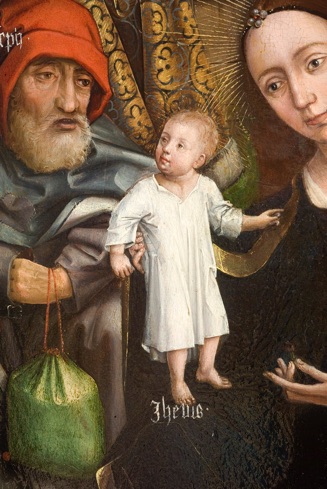
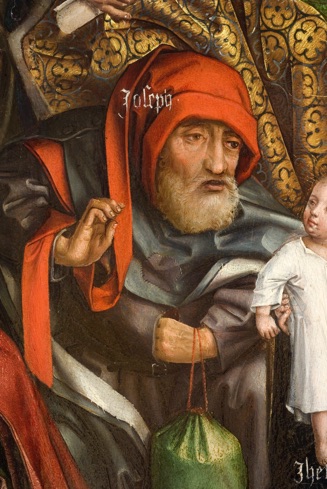
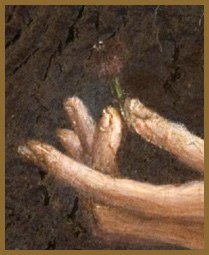

To the left of Joseph is the family group of St Anne’s second daughter, Mary Cleophas. She is breastfeeding her son Joseph the Just, who is completely swaddled from the shoulders down. In front of Mary Cleophas, her sons Simon Zelotes and James the Lesser are seated: Simon is holding a small pot of ink in his left hand and pointing with his right; he appears to be dictating to James, who is writing onto a scroll. Placed on her left is Mary Cleophas’ husband Alphaeus: he is the only beardless man in the group. Alphaeus is holding a scroll while trying to restrain their fourth son, Judas Thaddeus: a playful detail are the spectacles that Judas (also known as St Jude) is clutching.
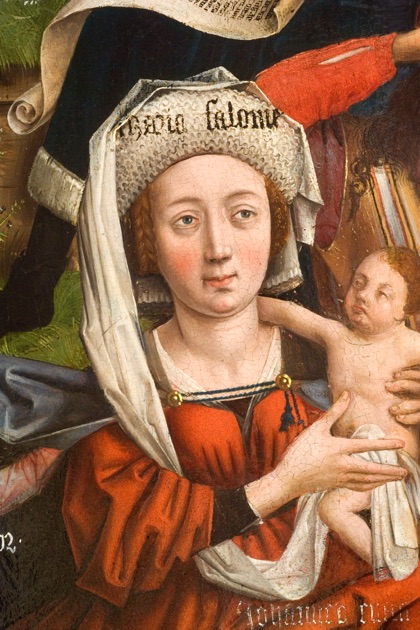
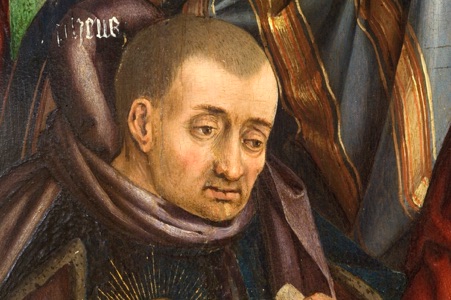
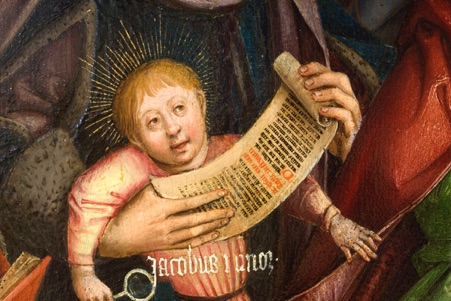
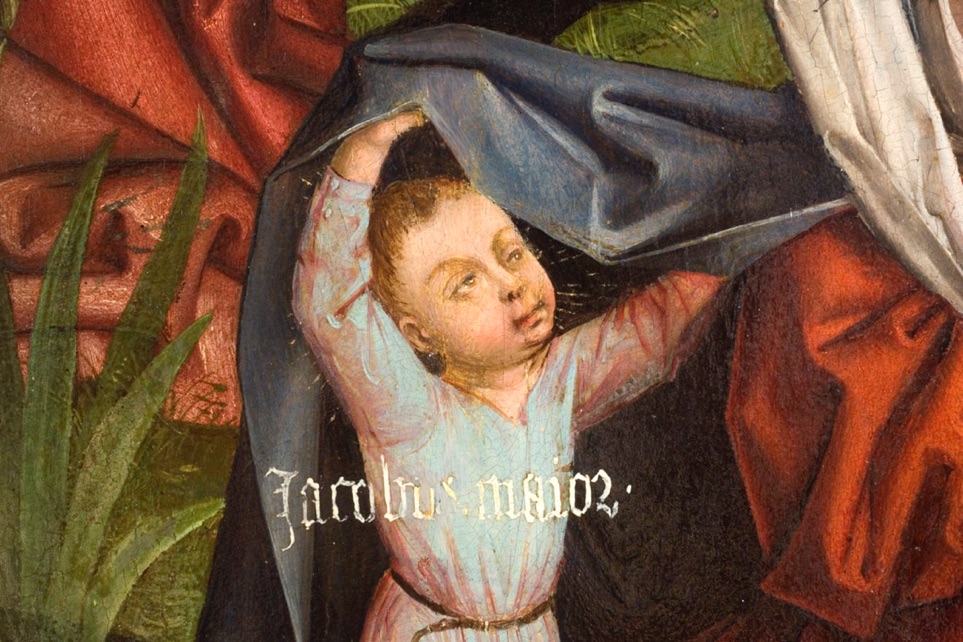
To the right of Mary is St Anne’s third daughter, Mary Salome. For reasons of symmetry, her husband Zebedee is placed on her left: he holds a medieval pair of spectacles before his eyes as he reads a sheet of paper. Mary Salome is accompanied by her two sons: St James the Greater is partly hiding beneath her blue cloak while her younger son St John the Evangelist is the naked baby in her lap. Thus Christ is flanked not only by his two aunts but also by some of his future disciples.
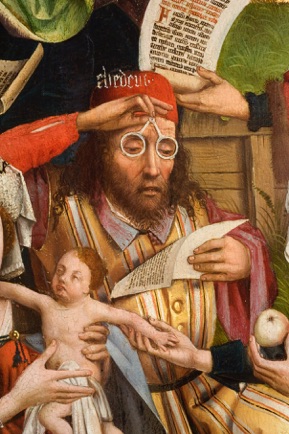
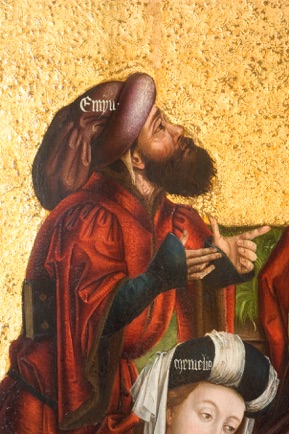
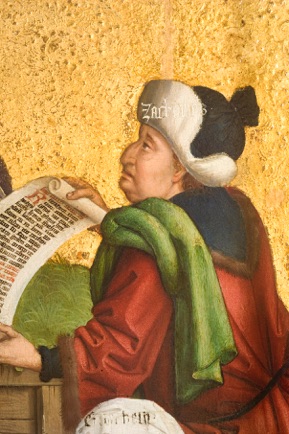
Linking the two generations are Emyu on the far left and Zechariah on the far right: they form part of the extended family of St Anne. Zechariah is holding out a large scroll to Salomas. Zechariah was married to St Elizabeth, daughter of St Anne’s sister Esmeria and thus Mary’s cousin. Elizabeth is seated below Zechariah. She is presented as an older woman: she is wearing a white veil and a blue dress that is draped around her in multiple folds, creating a very sculptural effect. Elizabeth is leaning towards little St John the Evangelist, holding out an apple to him: the apple was not only a reference to original sin, but also a traditional treat for young children. Elizabeth’s son is standing in front of her. His name is written across his feet: Johannes baptista, or St John the Baptist. He is dressed in a red hat and a long red robe with a belt: his more sophisticated clothes indicate that he is older than his cousin Christ.
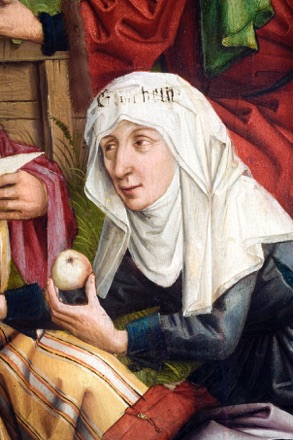
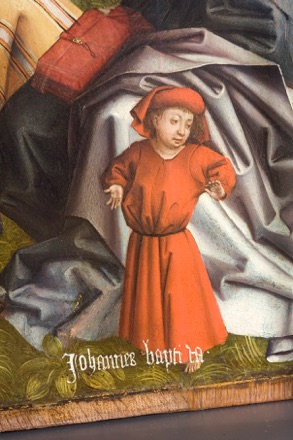

On the far left, Emyu is talking to Cleophas, as indicated by his hand gestures. Seated below him is his wife Memelia, wearning an exotic turban and holding an open book. Beside her, dressed in a red tunic, is their son Servatius (d. 384), former bishop and patron saint of Maastricht: his name is given on the scroll he is holding. According to medieval tradition, Emyu was the son of Eliud and grandson of Esmeria, the sister of St Anne: his son Servatius was thus believed to be related to Christ. This purported genealogy of St Servatius can be found in medieval art as early as the twelfth century. It was also corroborated by the medieval author Jacobus de Voragine, author of the Legenda Aurea. The inclusion of St Servatius and his parents here is particularly fitting for a painting destined for the cathedral of which Servatius was the patron saint.
